I recently wrote about the factors that I considered in shopping for a table saw. Today I’m going to tell you about what I bought and review my experience. Behold, the DeWalt DWE7491RS 10-inch Table Saw:
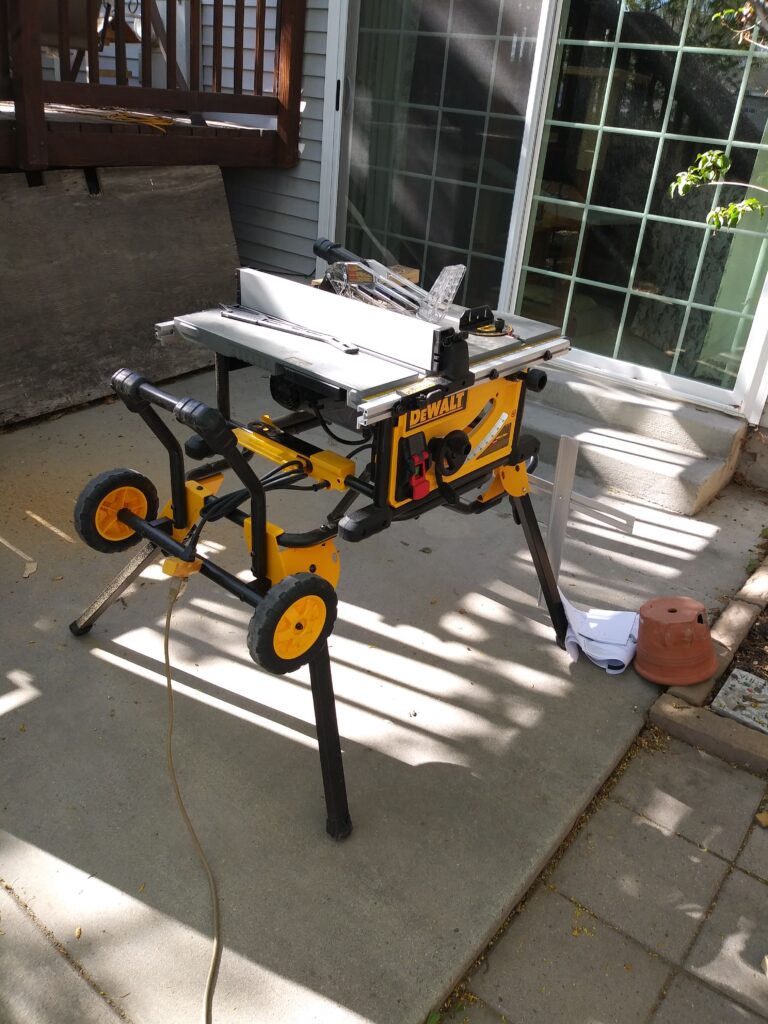
I actually bought this baby back in January, but other than assembling it, I’ve been unable to try it out until this week. My project list demanded immediate attention, and mostly that involved slinging a paintbrush, followed by a posthole digger. Maybe a story for another blog post later on.
I suppose if I were cool and hip I’d have created an Unboxing Video for you all. But…no. But here’s the box it came in:
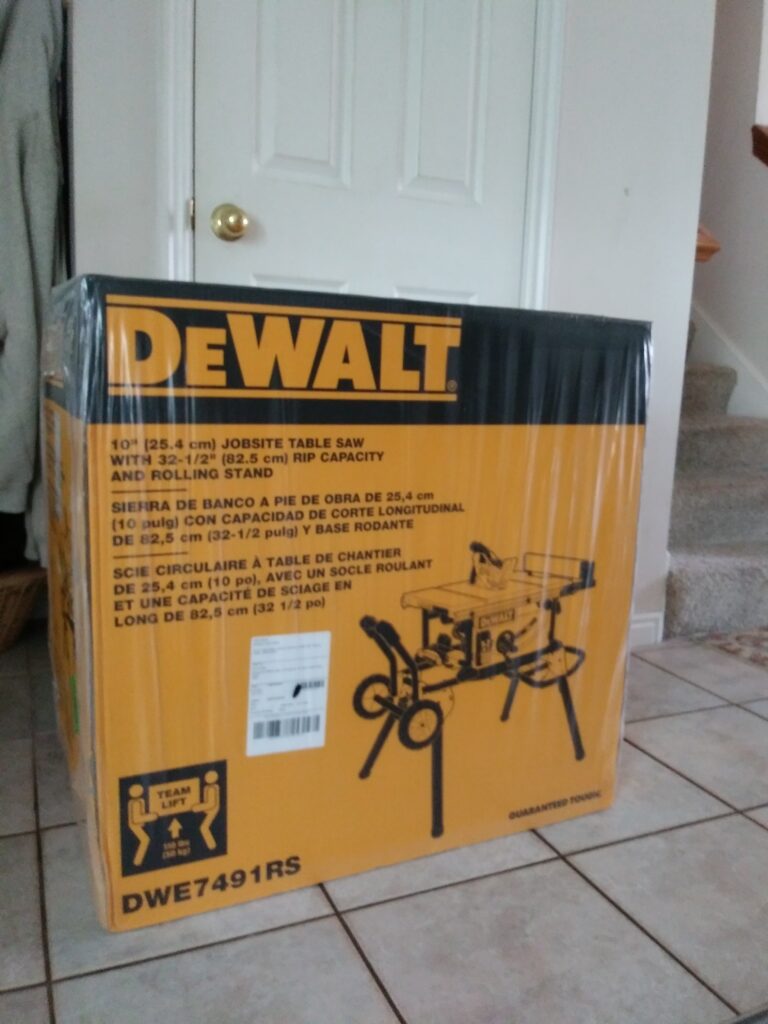
I got the special edition, which came with a rolling stand. The saw itself came pretty much ready for use. The stand came assembly-required.
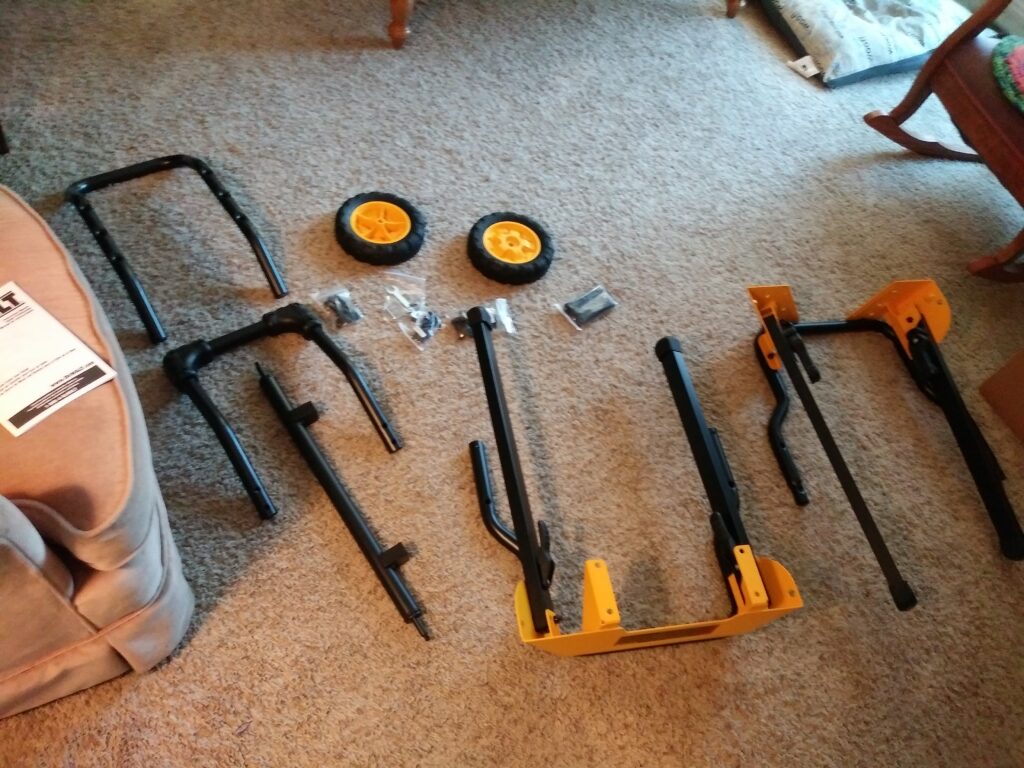
So, let’s start with the stand. It’s essentially a hand-truck with foldable legs, to which you can attach the saw casing. It’s a bit tricky interpreting the instructions, but I managed with only mild cursing. And getting the saw itself maneuvered into place to attach it to the frame is difficult, especially doing it by yourself. Don’t do it yourself. Get some help. Don’t be stupid like me. It wasn’t pride, merely impatience. Everyone else was out of the house at the time.
But when I got it assembled my opinion changed considerably. They really designed this stand well. It’s sturdy. It rolls well. The folding legs have large, well-placed latch levers that are easy to operate, and they’re strong enough to bear the weight of the entire thing as you stand it up. And once you get it set up you realize the full extent of their genius: the legs on the side facing the front of the saw are canted at a steeper angle than the ones in the back. They don’t stick out and trip you when you’re working in front of the saw. The ones in back are at a good angle to brace the saw as you push wood through it. It also places the work surface at a very comfortable height just above my waist level. Maybe I’m easily impressed, but it left me very hopeful. If they put as much thought into the saw as they did the stand I would be in for a treat.
Unfortunately it took me three months to find out. Yes, I saw a few things immediately while just looking it all over and making sure it had everything it was supposed to come with. They made it to be portable, and everything that could possibly fall off (with perhaps the exception of the miter gauge) has a storage spot on the chassis somewhere and won’t fall off easily. That will make it take more time to set up and take down, but I can live with that.
So as I said, this week I got to try it out. After positioning it in the proper spot (ie. not pointed toward anything I want to keep (still remembering that board that kicked back years ago and tried to give me an appendectomy), I got out the instructions and started setting it up. It takes a bit of practice. The blade guard assembly goes in quickly once you find where the release lever is, and learn how to line it up right in the receiver when you can’t see down past the throat plate very well. The anti-kickback device, in all its spring-loaded glory, is a bit tricky to get into place. The fence take a bit to figure out, but goes into place easily enough.
They tell you in the instructions that everything from the fence gauge to the skiving knife were already adjusted in the factory and shouldn’t need recalibration. As far as I can tell, they’re right. I haven’t seen anything to make me doubt so far. I’ve yet to try out the blade angle mechanism yet, but everything else seems to work just fine right out of the box.
The miter gauge feels a little cheap. I may look into something more solid at some point, but it works just fine for what I’ve been doing so far. The rip fence adjusts via rack and pinion mechanisms on both sides, and locks with a lever that is a little hard to find quickly, but otherwise seems solid. The fence measurement scale is not immediately intuitive, but works well once you figure it out. There’s probably something about it in the instructions, but I was too eager to get started at that point.
After ripping some slices off some scrap wood I tried out changing the blade out for a dado stack (My review of the Freud 8″ Dado Stack is here). I did have to buy a separate dado throatplate, but DeWalt makes one specifically for the saw (DWE7402DI). It sits a little lower that the tabletop, unfortunately, and impacted some of my test cuts by making the depth uneven when one end of the board was able to sink a little:
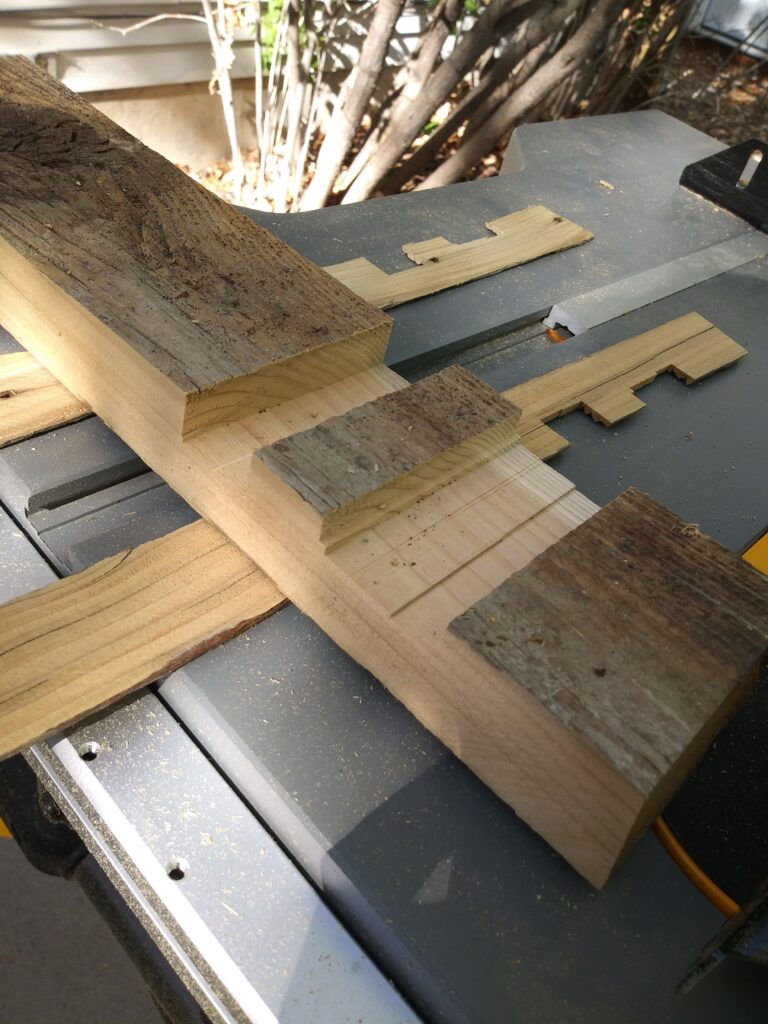
UPDATE: My older brother read this and offered some quick advice. The throatplate comes with screws along both edges that can be adjusted to raise or lower how that edge sits in relation to the table top. I hadn’t even noticed, but it seems obvious now. Just another reason why I like keeping my older brother around.
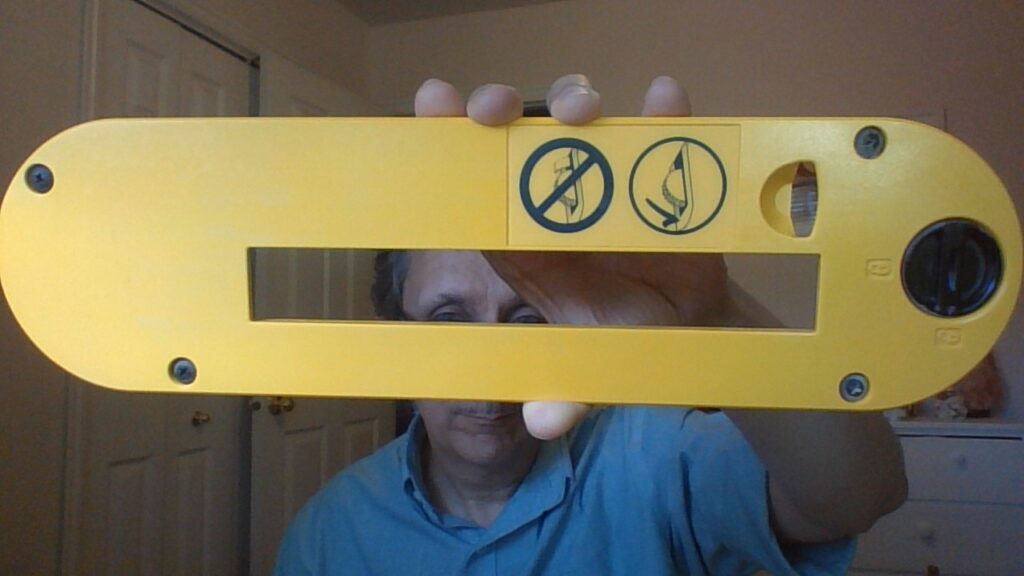
The specs say the saw will handle a 13/16″ dado stack. I got up to that when I got down to my project in earnest, ripping a 1.5″ dado in two passes. Every cut came out nice and uniform. I think my stack set will accommodate even wider, but I don’t think the arbor would safely take much more.
I will admit I don’t have much of a baseline for comparison, but so far I’m pleased with my experience. The saw seems well designed, and it offers features most jobsite saws don’t, like the rack and pinion fence adjustment. Or a fence, for that matter. The fence also works in about three different configurations for more convenient cuts, and has a flip-down extension for narrow cuts. The blade area is designed to pulls the sawdust down and out through a 2.5″ dust port in the back of the unit (I have a shop vac; I’ll have to try attaching it sometime), and seems to work pretty well. The wider dado cuts showered me with sawdust, but that may just be the nature of wide dado cuts. It’s still considerably less mess than using my circular saw, and most all of the sawdust was concentrated in the back.
The power switch is designed to make it very hard to turn on accidentally (and it is–if anything it’s too hard to turn on) and very easy to turn off. A quick slap of that section of the front chassis will connect with the switch enough to shut down. The blade stops fairly quickly, too (a few seconds).
Perhaps I’ve been working with circular saws for too long, but I was surprised at how quiet this saw is. Rather than the high-pitched screech of a circular or miter saw, it’s more of a low growl. It’s still loud enough to merit ear protection, of course.
In short, there is nothing cheap or flimsy about this saw. While I’m not experienced enough to speak to how precise it is, so far it seems to work well enough for what I’m doing–I’m not making complex cuts or ripping hardwoods or crafting to fine tolerances. Any errors I’ve seen so far are due to operator error, more than likely. Perhaps I’ll come back sometime in the future and provide an update, but so far I am pleased with my purchase.
I actually tried to order this saw late last year only to find it completely out of stock. Everywhere. I encountered that again in January when I first tried to order it–there were none to be found online, in brick-n-mortar or anywhere else (for less than an exorbitant markup, anyway). It was originally backordered into March or April, but I checked back a few weeks later and found some in stock. I pounced. It’s a very popular, highly rated model (currently 4.8/5, with 2639 reviews on Amazon). At $600 it’s on the high end of jobsite saws, but with the stand included I feel the value is there. It’s going to come in particularly handy later this year when I’m building some projects at the far end of the yard.
